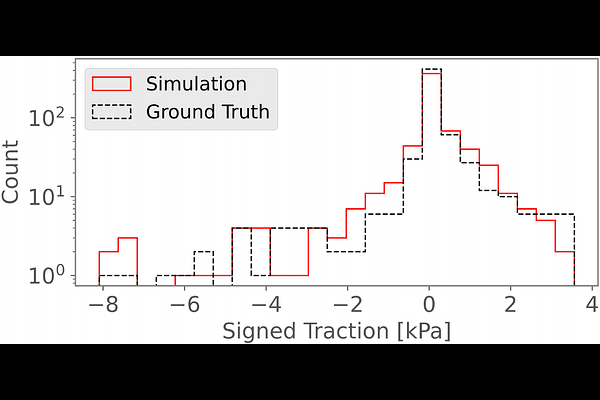A New Computational Inverse Modeling Approach for Cellular Traction Force Microscopy that Accounts for Hydrogel Compressibility

A New Computational Inverse Modeling Approach for Cellular Traction Force Microscopy that Accounts for Hydrogel Compressibility
Peery, G.; West, T. M.; Chemuturi, S. S.; Pham, J. H.; Ferrari, G.; Sacks, M. S.
AbstractWe have recently documented significant compressible behaviors in hydrogels implemented in 3D traction force microscopy (TFM). Therefore, here we have developed a new computational pipeline that accounts for this observation. Additionally, the new method accurately recovers large ranges and spatial heterogeneity of hydrogel moduli induced by cellular remodeling associated with enhanced extracellular matrix secretion and MMP-degradation. The algorithm sought best fit of the 3D displacement field with a multi-stage approach, wherein the Tikhonov regularization parameter in L-BFGS was progressively lowered. Forward simulations were performed in FEniCS, with gradients computed with FEniCS-adjoint and MOOLA to weight degrees of freedom according to hydrogel volume affected. Once developed, we conducted a series of synthetic test cases applying actual cell geometries, experimentally-matched compressibility, and realistic displacements with experimental noise levels. Employing an incompressible material model resulted in predicted moduli with over 415% mean relative error and predicted strain energies 5-fold greater than the prescribed values. Moreover, errors in predicted traction forces were amplified by a factor of 10. Thus, accounting for hydrogel compressibility was critical for accurate hydrogel moduli and strain energy recovery. To demonstrate the utility of our approach, we applied it to TFM data of human mitral valve interstitial cells embedded in PEG hydrogels with pre-altered moduli of 54 Pa. We determined that J ranged [0.45, 1.66] and local hydrogel moduli exhibited large variations, 3.6 Pa to 2.4 MPa. This study underscores the need for correct handling of hydrogel compressibility for accurate estimation of local hydrogel moduli and traction forces.